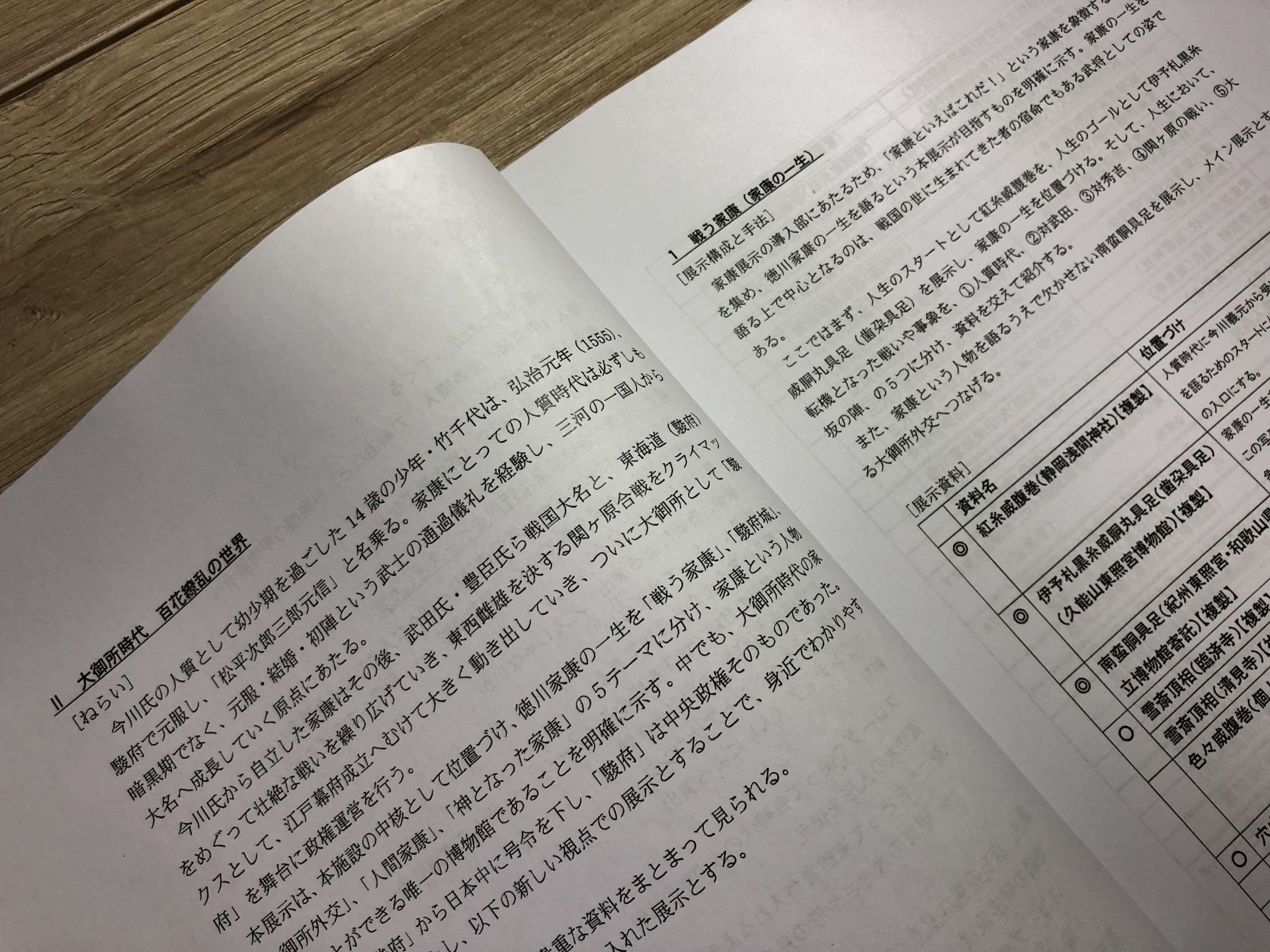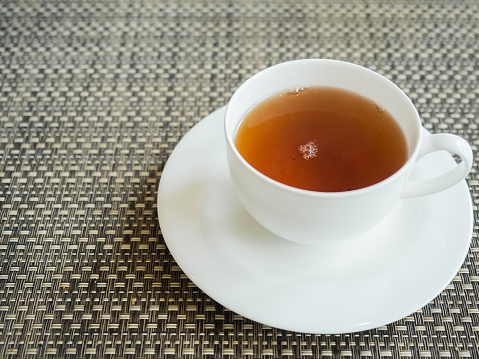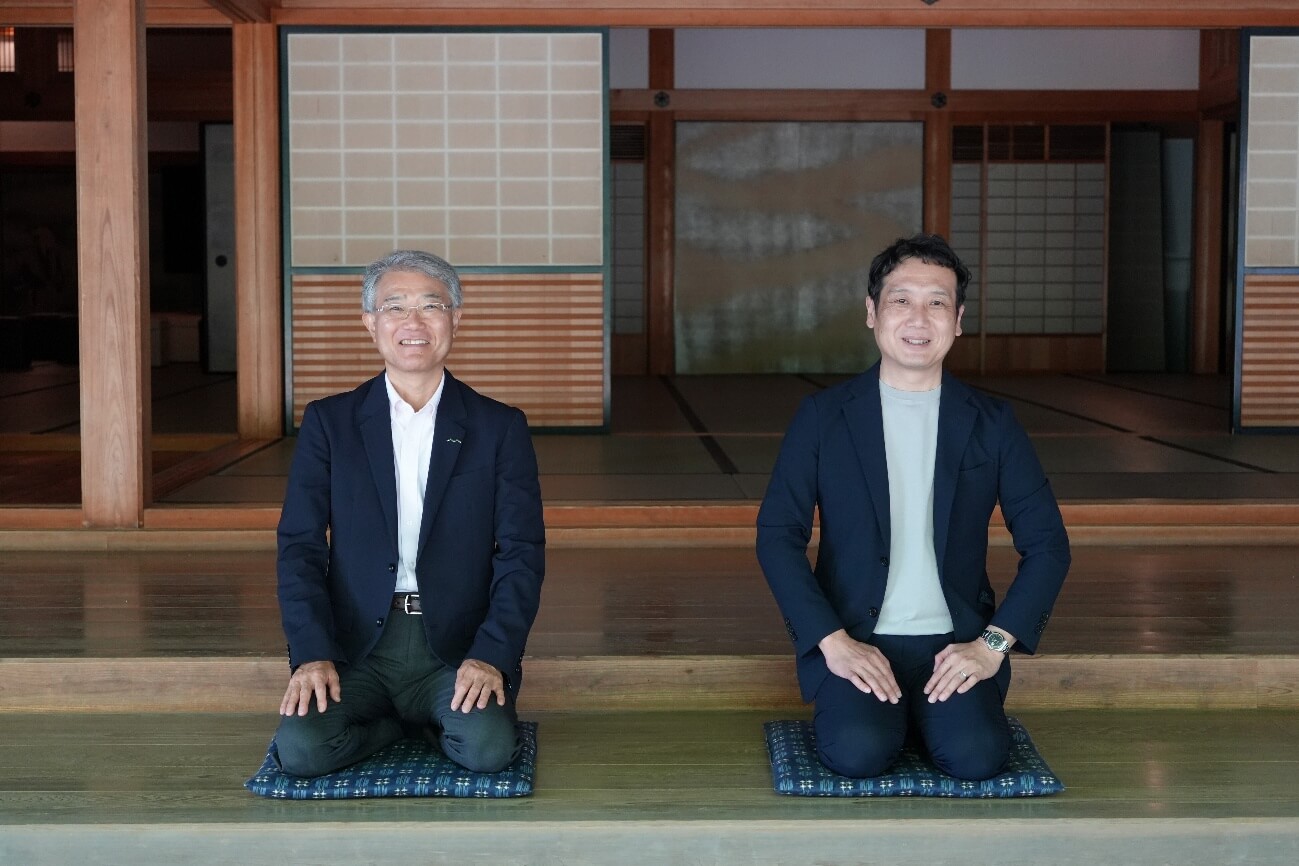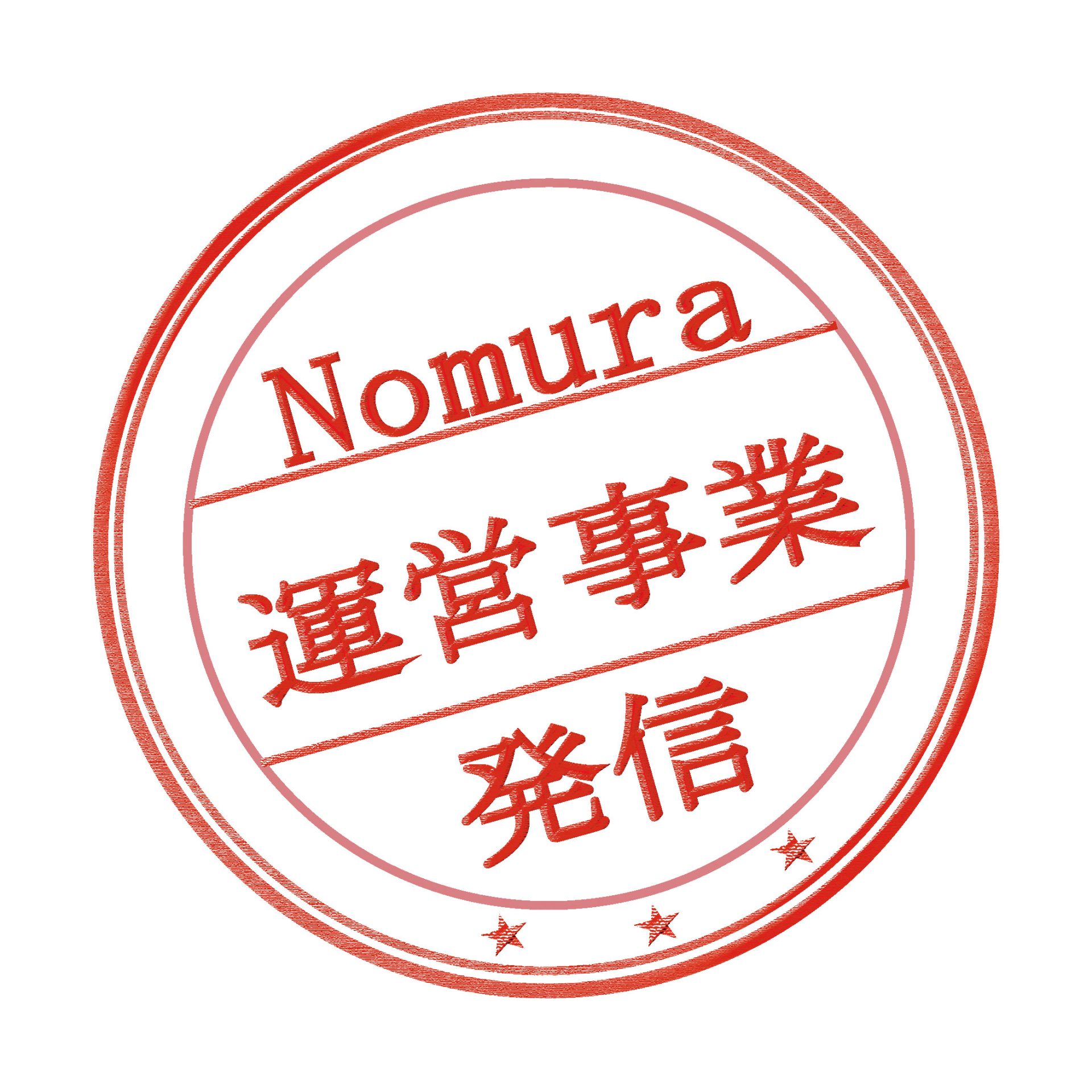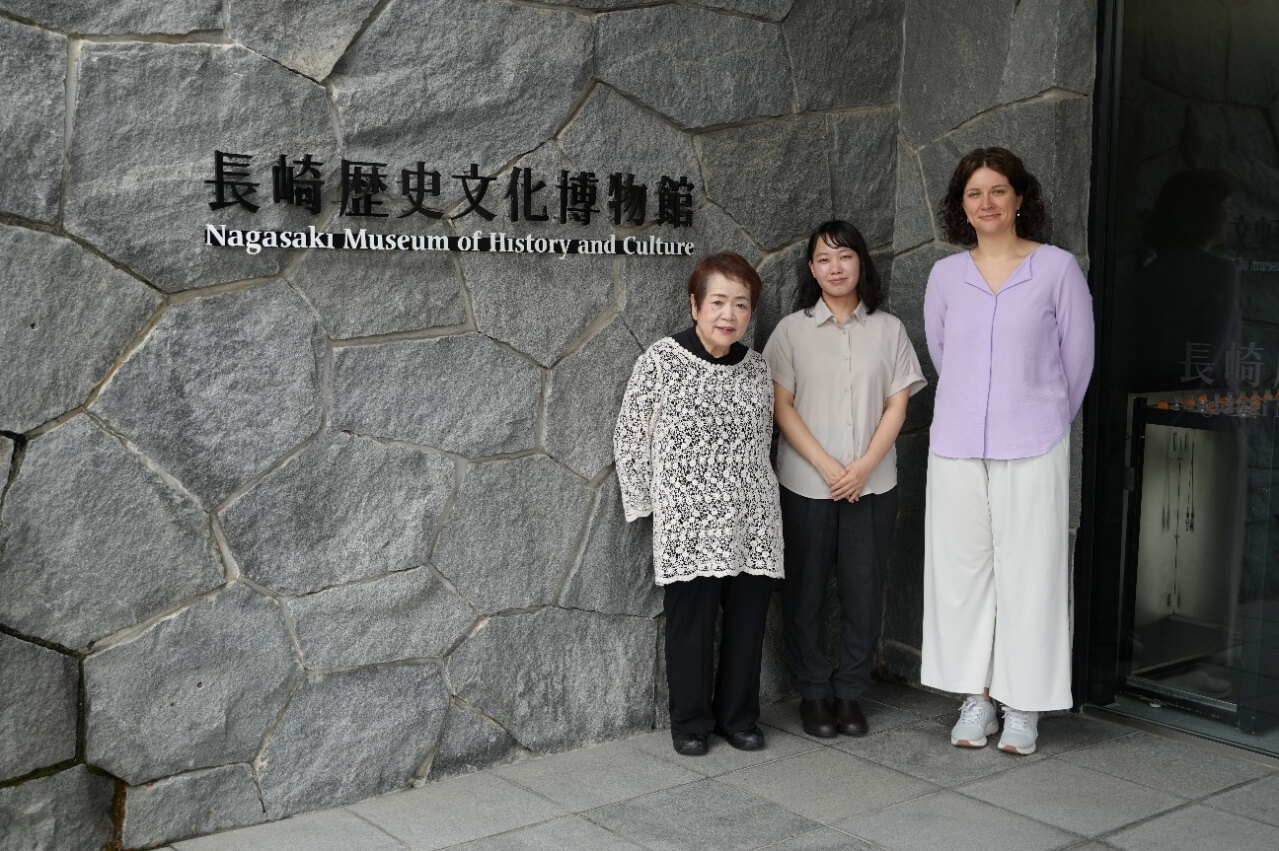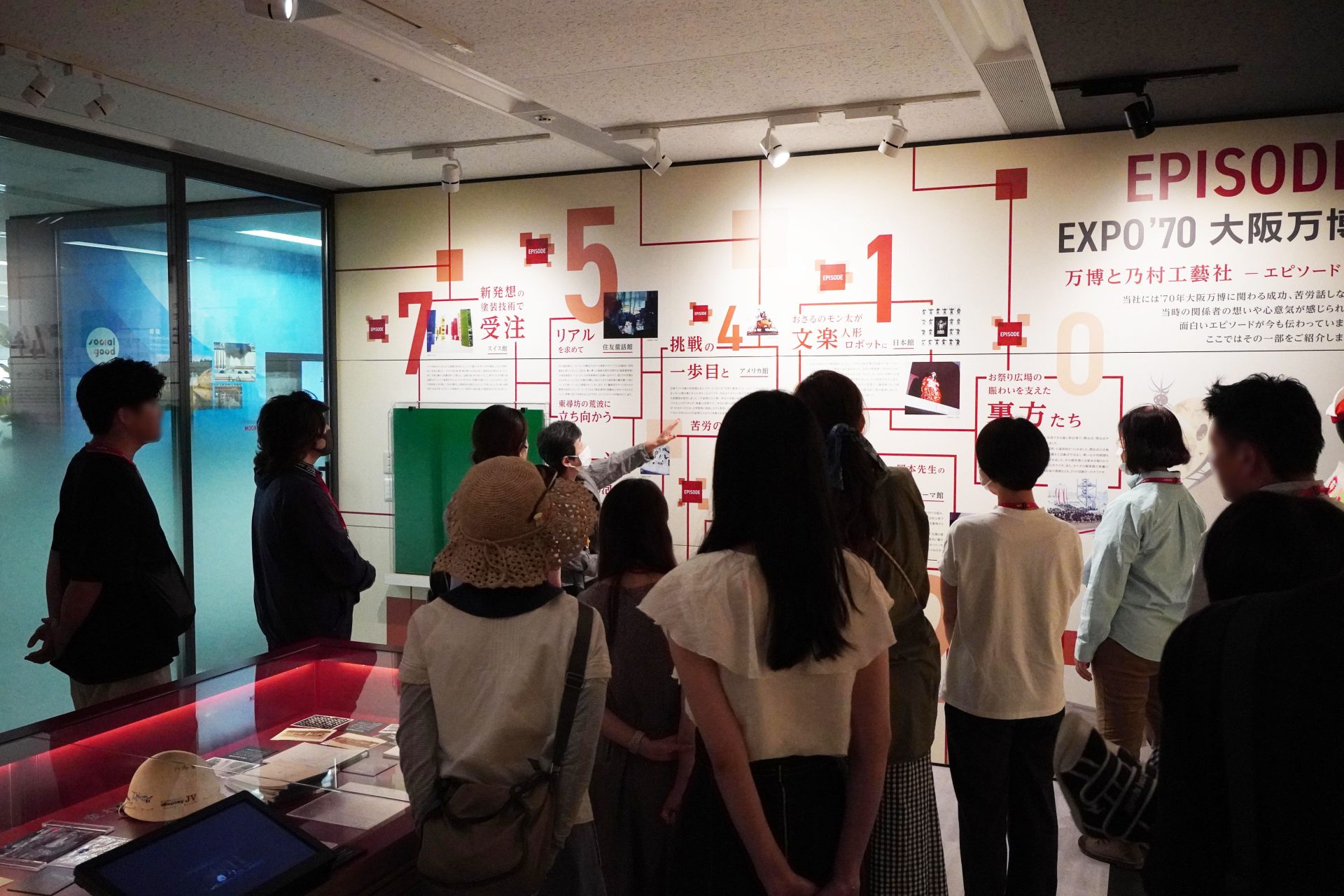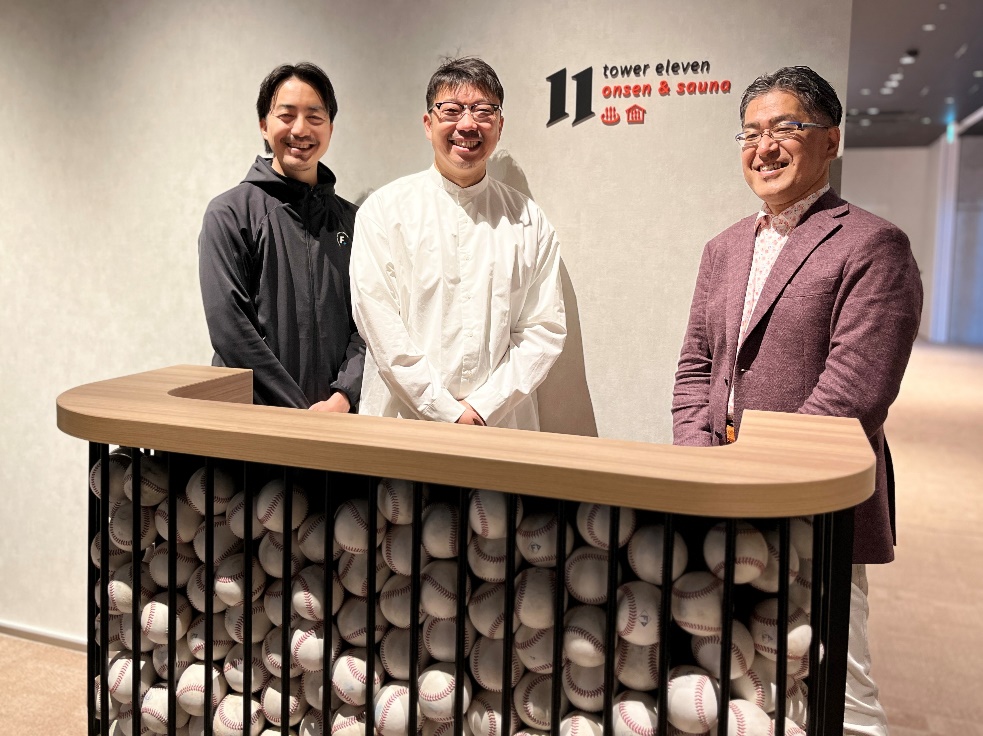- text and edit by
- 井戸 幸一
いよいよ準備が整ってきた、高まる期待をお伝えするシリーズ第2弾!
本年7月23日のプレオープンが迫る「静岡市歴史博物館」。
静岡市に歴史博物館ができる意味を深堀りするシリーズとして、前回は中村館長ほか静岡市の担当者の皆さまに基本設計以前のお話を伺いました。今回は第2弾として、2017年の基本設計以降に本プロジェクトを推進してきた静岡市文化振興財団学芸課参事の森昌俊さん、同学芸課長の廣田浩治さん、同主任の鈴木将典さん、静岡市役所歴史文化課の宮崎泰宏さんの4名にお話を伺います。インタビューアーは、前回同様、乃村工藝社プランニングディレクター森誠一朗が担当しています。
皆さんそれぞれに、2017年の基本設計、2018年以降の実施設計、そして2020年からの展示工事の各段階で本プロジェクトに参画された経緯やそれぞれの役割、苦労した点、大切にされてきた考え方などを語っていただきます。
「静岡市歴史博物館」の基本設計
大切なのは、過大評価せず、歴史的事実を伝えること
乃村工藝社 森(以降、森)
それではまず、基本設計についてお話を伺っていきたいと思います。森参事は以前、「歴史館いずみさの」の館長を務められたということですが、本プロジェクトに参画された経緯とその役割についてお聞かせください。
森参事
静岡市で歴史博物館のプロジェクトがあるから参加してくれないか、と静岡市文化振興財団から誘われたことがきっかけです。博物館の建設には多くの知識や経験が必要ですが、そうしたスキルを持つ人がなかなか見つからないと言う話でした。それなら自分が泉佐野市で経験したことが活かせるかもしれないと考えて、お受けすることにしました。
森
2018年の基本設計は、市で作成された「展示構成案」が基礎資料になりました。この資料はどのようなものでしょうか。
森参事
この「展示構成案」の内容は、静岡市が平成27年度に策定した「(仮称)静岡市歴史文化施設建設基本計画」の中にあって、今も引き継がれています。ここには徳川家康を中心に今川氏、東海道という3つのテーマがすでにあります。これは現在の基本展示のシナリオも同じで、展示構成は大きく変わっていないことが確認できます。
森
「展示構成案」を作成するうえで、大切にしていた考え方などがあれば教えてください。
森参事
一番大切にしていたのは、常に歴史的事実に基づいて考える、ということです。一般的に地元の人たちだけで歴史展示をつくると、歴史を美化したり、過大評価してしまうことがあります。結果的に独りよがりな内容になってしまい、外部から見るとおかしな展示になってしまう危険があります。
ひとつ例をあげると、2016年の徳川家康公顕彰四百年記念事業のときに、静岡市がフォーラムを開催しました。そのタイトルは「世界を見据えた大御所外交」。家康が駿府を拠点に、世界のリーダーと渡り合って外交を展開したというイメージです。確かに世界史的には大航海時代にあたり、ヨーロッパ人が日本にやってきました。しかし、当時の日本にはヨーロッパに行く技術はありませんでした。家康がヨーロッパのリーダーと伍して世界を動かしていた、と言ってしまうのは誇大表現です。その事実を踏まえないと、当時の外交をきちんと語ることはできません。「展示構成案」を作成する中で、歴史的事実を逸脱する方向に行くようなことがあると、ここはひとつ冷静になりましょう、という話をしてきたつもりです。
また潜在的には、静岡の歴史的な資源は、素晴らしいものがあると思っています。でもこれまで、静岡市はそれを充分に活かしきれていない。ひとつひとつについて、きちんと磨き上げていく必要があると思います。
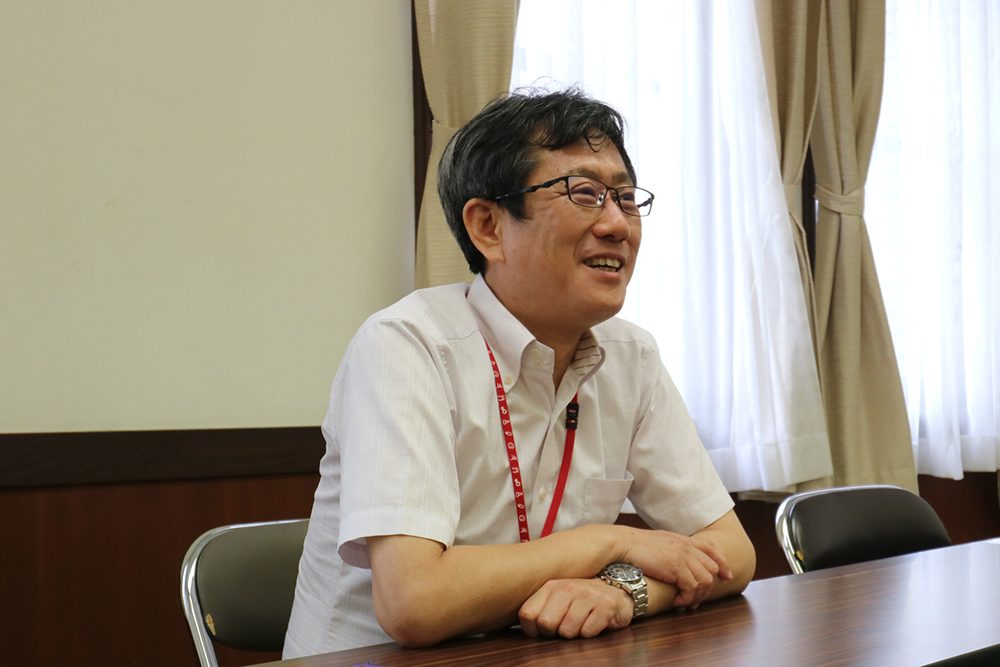 大阪での経験を活かして計画の礎をつくった森参事
大阪での経験を活かして計画の礎をつくった森参事
森
確かに、客観的に歴史を眺めること。常に事実に基づくという姿勢は重要ですね。基本設計当時を振り返ると、森参事がおっしゃられたことがチーム内に徹底されていたのだなと改めて感じました。
森参事
ただ、あまり歴史的事実にこだわりすぎるとつまらなくなる可能性もある。要は塩梅、バランスの問題です。歴史博物館にとっては、難しいテーマだと思います。
森
森参事にとっては、「歴史館いずみさの」に続き2度目の博物館立ち上げですが、1度目の経験が活きたことがあれば教えてください。
森参事
施設の名称は、静岡市歴史博物館という非常にオーソドックスな名称に落ち着きました。これは中村館長が望んだことでもありますし、私もずっと言い続けていました。これには理由があります。実は前職の「歴史館いずみさの」でも、館名についてはいろいろと議論があり、博物館という旧態依然たる印象のある言葉を使いたくないという論点があったのです。それでいろいろ話し合い、アイデアを出し合い、「歴史館」という名称を考えました。現在では、歴史博物館の多くの施設が「歴史館」という名称を用いていますが、この名称を初めて名乗ったのは「歴史館いずみさの」です。
それから四半世紀が過ぎて、静岡市でまったく同じ議論が起こりました。これについては正直驚きでした。つまり博物館という名称は手垢のついた古臭い言葉ではなく、この四半世紀の間、常にテーゼであり続けたことを、はからずも証明することになったのです。そしてこれからも、きちんとした印象を与え、使われ続ける名称であると思います。この議論を通じて、静岡市歴史博物館の名称については、「博物館」という言葉を使うべきだと思ったし、使ってよかったと思います。
「静岡市歴史博物館」プロジェクト参画するにあたって
「キミがいなければ、このプロジェクトは成功しない」
森
その考え方は、もっと打ち出してもいいかもしれませんね。では次に2018年以降の実施設計の話に移りたいと思います。ここからは廣田課長、鈴木主任にお伺いします。それぞれプロジェクトに参画された経緯と役割を教えていただけますか。
廣田
私も静岡市文化振興財団からお声がけいただき、参画しました。森参事と同じく「歴史館いずみさの」にいましたが、当時は市役所でデスクワークをやっていました。先に転職されていた森参事から「博物館の仕事がしたいだろう」と口説かれたのを覚えています。
森参事
いやいや、僕がはっきり言ったのは、「キミがいなければこのプロジェクトは成功しない」です。
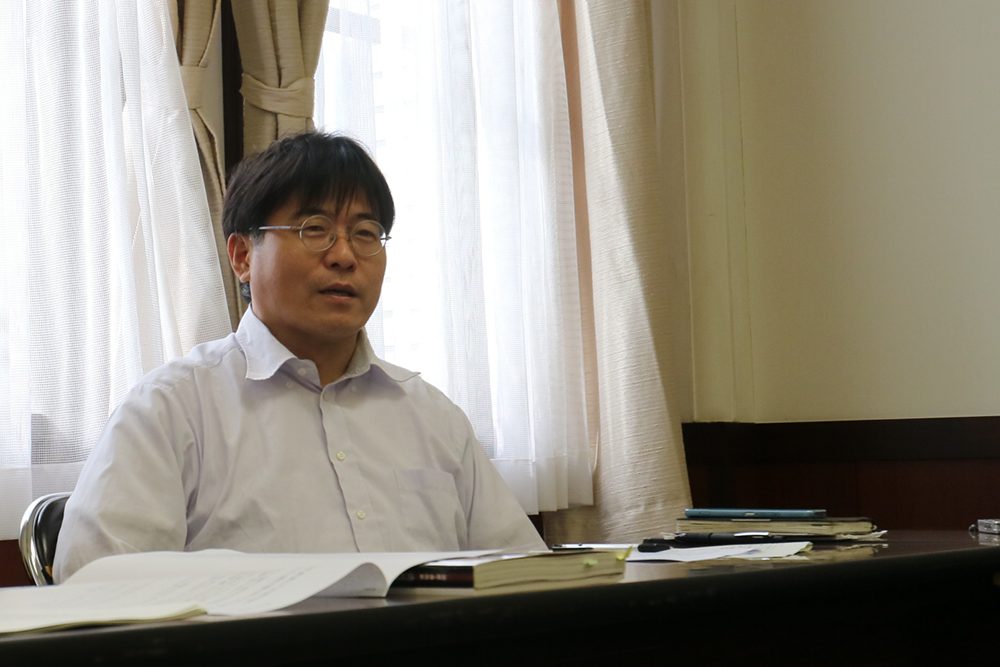 森参事の予言通り、プロジェクトの要として活躍する廣田課長
森参事の予言通り、プロジェクトの要として活躍する廣田課長
廣田
実は、転職した当時の役割は、展示設計ではなく運営計画でした。博物館のスペースの使い方とか、全体の事業プランとか、そういう打ち合わせを毎週やっていました。ある段階から展示設計の打ち合わせにも加わるようになりました。
鈴木
私はもともと静岡の戦国時代について研究していました。静岡県地域史研究会という地元の歴史研究会に20年程参加していて、静岡にもよく来ていました。静岡市に歴史博物館がないことも知っていて、あればいいのにな、とは思っていました。
東京で非常勤の学芸員をやっていて、就職先を探していたときに、静岡市が博物館をつくるので、文化振興財団が学芸員を募集していることを知りました。しかもテーマが家康・今川ということで、「これは受けるしかないだろう」と思い応募しました。
「静岡市歴史博物館」設計段階での苦労、大切にしたこと
「資料が少ない、情報が揃わない。ならばどうするか」
森
一度目の実施設計について特に苦労された点、大切にされていた考え方があれば教えてください。
鈴木
財団に入って最初に渡されたのが、基本設計図面という展示の骨格でした。私の仕事は、そこに肉付けをしていくこと。その中で一番苦労したのは、「資料がない」ということでした。家康が今川義元から贈られたといわれる「紅糸威腹巻」(くれないいとおどしはらまき)と、関ヶ原の戦いや大坂の陣に携行したとされる「歯朶具足」(しだぐそく)は、基本設計の段階から復元模造を展示することが決まっていました。ただ、家康の生涯を説明するのに、二領の甲冑の間の資料がなにもない。そこをどう埋めていくかということにすごく悩みました。足りないところは、複製をつくったり、資料を収集したり、色々な手段を使って今の形にしていきました。
 長年、静岡の歴史を研究し、博物館の設立にも関わることになった鈴木主任
長年、静岡の歴史を研究し、博物館の設立にも関わることになった鈴木主任
廣田
自分は運営計画が中心だったので、もっぱら展示に関する仕事は文化庁への説明の検討や文化庁からのオーダーにどう応えるかということでした。
実施設計の途中から、そろそろ展示品を決めなきゃいけなくなり、展示の打合せにも参加するようになりました。
やはり資料が少ないというのは問題です。博物館は、スタメンで展示する資料の3〜4倍は資料を持っていないとまずいので。そうなると自分自身も徳川や今川をもっと知らなくちゃいけないと、休みの日に図書館に通ったり、周りの博物館に行ったりしました。とにかく自分もまず静岡の歴史とその資料について勉強だということで。
森
展示可能な資料が限られる環境で、展示候補となる資料の調査収集、複製制作の手配はどのように進めたのでしょうか?
鈴木
まず、市がどういう資料を持っているのか、市内にどういう資料があるのかを調査しました。徳川・今川の資料はすべてリストアップして、目星をつけていきましたが、近世・近代の資料は分量が多く、どこになにがあるのか全く情報がなかったため、設計段階でも十分に内容を詰めることができず、展示制作まで後を引くことになってしまいました。
廣田
資料の収集という点からいうと、今までの経験がある自分が資料購入のための調査に行く役割になることが多かったですね。買っても劇的に資料が増えるわけではないけれども、静岡市は資料を買うという経験がないのでとにかく買わなくてはいけない。また複製も展示のために必要不可欠です。実物をずっとは展示できない資料は、市の担当と話し合って複製製作を進めました。
静岡市歴史博物館建設:貴重な遺構発見、再設計への挑戦
「博物館の建設予定地から、驚くべき遺構が見つかった」(注)
注・・・2019年に建設予定地から、戦国時代末期の道と石垣の遺構が発掘された。設計の変更を余儀なくされ、最終的には埋め戻しをせず、開かれたエントランス空間の中から遺構が見える形となり、開館年度も当初の予定より1年ほど遅れると発表された。
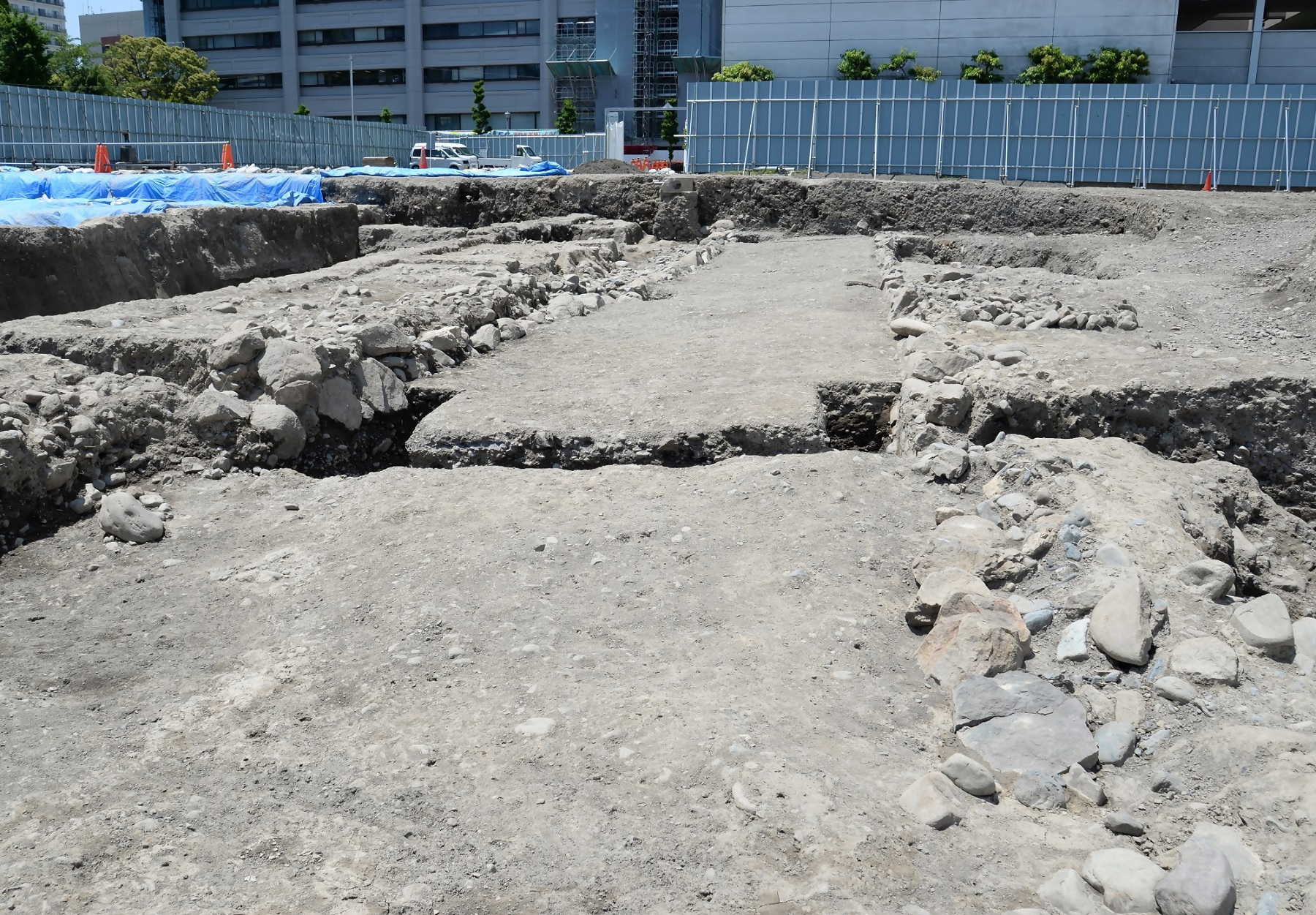 道と石垣の遺構の発見時の様子
道と石垣の遺構の発見時の様子
森
2019年に建築予定地から遺構が発見されたときは、どのように感じましたか。また遺構を残す形で設計をやり直すことになったプロセスを教えていただけますか?
廣田
2019年の6月だったと思うのですが、当時の市の岩田課長から、貴重な遺構が見つかったとお話がありました。「えーっ」と驚きましたね。以前から大した遺構は見つからないだろうと言われていましたが、想像していた以上のものが見つかった。スケール感でいっても、遺構を見せる形で残すことになると直感しました。当然、設計変更もしなくてはいけないだろうなと。
森
あれだけの規模で遺構を露出したまま展示するというのはなかなかないですよね。
廣田
どのように遺構をプロテクトするのかというのは、時間をかけて議論しました。ただ、メンテナンスをこまめにやっていくというスタンスに立てば、上をガラスなどで覆わないほうがやりやすいかもしれません。
鈴木
建設予定地は駿府城の三の丸だったので、発掘調査をやると聞いたときは、なにか出るだろうなとは思っていました。ただ予想以上の大物が出てきてしまった。それを博物館の中で見せると決まったときに、どういう見せ方をするのか、遺構を残しながらどういう建物をつくりたいかという議論をしました。例えば、遺構部分は吹き抜けにして建物の外にしようとか、遺構の上を透明な床にして上から見られるようにしようとか、いろいろとアイデアを出し検討した結果、いまのような形に落ち着きました。
森
再設計となった二度目の実施設計で苦労された点、大切にされていた考え方を教えてください。
鈴木
もともとひとつだけだった展示フロアが、2つのフロアに分かれたことが大きかったです。ただ展示の内容自体は大きく変わることありませんでした。2階は大御所外交から始まって家康と今川、3階は近世と近代。基本的な考え方は変わっていなかったので、それほど大変ということはありませんでした。ただ、建築のやり直しで3階の出入口が非常に狭い通路になってしまいました。当初は「歴史文化のまちに繰り出そう」という企画だったのですが、スペースを考慮して、現在の「世界にはばたく静岡」という形になりました。
展示工事担当者の視点から見た、静岡市歴史博物館プロジェクト
学生時代に聞いたプロジェクトに、12年の歳月を経て参画
森
実施設計時の担当レベルの思いや、工夫、ご苦労をお伺いしました。それでは次に展示工事のお話を伺いたいと思います。宮崎主任主事が本プロジェクトに参画された経緯と役割をお話いただけますか。
宮崎
私は、市役所にはもともと学芸員の枠で採用されたのではなく、事務職採用でした。観光交流文化局 スポーツ振興課というスポーツ施設を管理する部署に入り、その後税金を取り扱う部署に行きました。
学生時代に日本史を学んで学芸員の資格はもっていて、歴史文化課に行きたいという希望は出していたのですが、2019年に配属されたのは隣の文化財課でした。隣の課への異動だったため、歴史文化課に行くことはないだろうと思っていたのですが、2021年の内示で歴史文化課に異動が決まり本当にびっくりしました。
一般的に畑違いの部署に異動することが多いので、光栄と思いつつも戸惑いの方が大きかったかもしれません。
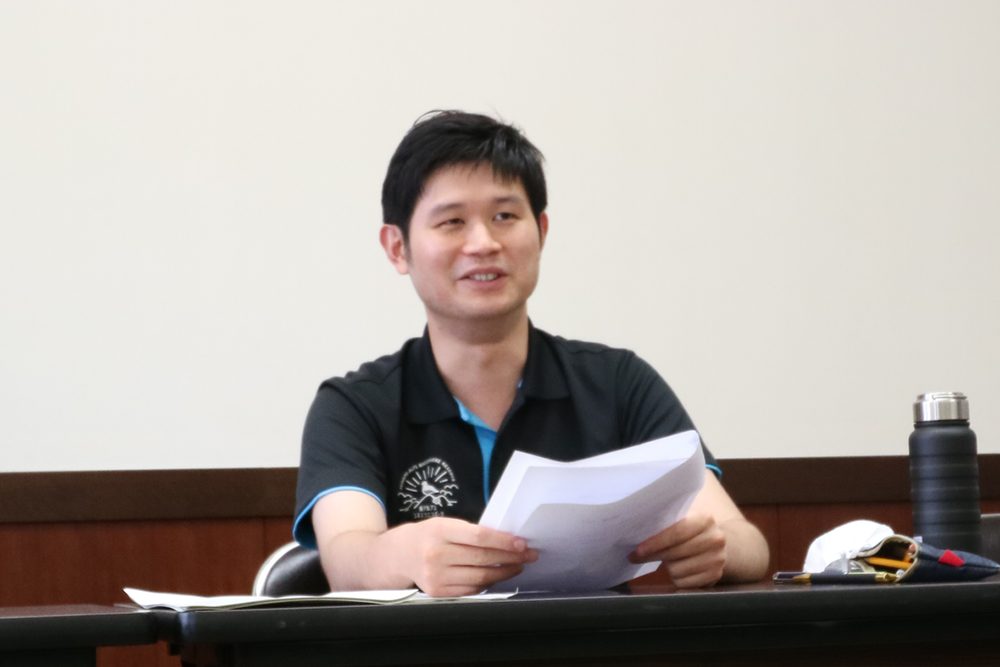 本年度よりプロジェクトの締めくくりを担うことになった宮崎主任主事
本年度よりプロジェクトの締めくくりを担うことになった宮崎主任主事
森
現在はどのような仕事をされているのでしょうか。
宮崎
展示工事の統括的な役割を担当させていただいています。異動当初の2021年は、どちらかというと管理運営に関する業務を担当していました。条例案の作成や、博物館の管理運営にかかわる予算取りです。
今年度から、展示設計がメインになりました。いよいよ仕上げのタイミングというところで会議に参加するようになったので、担当者の中でも一番わかっていない人間が最後の仕上げをやりだしたというわけです。
森
今日お集まりの中で、宮崎さんは唯一の静岡市ご出身ですが、静岡の歴史について、特に記憶に残っている体験とか、経験があれば教えてください。
宮崎
自分が日本史に興味を持ったのは小学校5年生のときです。なにがきっかけだったのかは忘れてしまったのですが、戦国時代が好きでした。大学までずっと静岡で、歴史の学科に入り、地元の歴史を勉強しようと思ったときに、今川義元に興味を持ったのですね。何万もの軍勢を率いながら信長に桶狭間で敗れた情けない武将というイメージを持たれていますが、そもそも何万もの軍勢は無能な人物には組織できない。本当に情けない武将だったのかなという素朴な疑問から、今川氏を研究してみようかなと。大学では「今川氏の領国支配」という卒論を書きました。
森
大学で日本史を学んだということですが、参画される以前にこのプロジェクトのことはご存知でしたか?
宮崎
確か大学2年か3年のとき、指導を受けていた教授に、「静岡市で博物館をつくろうとしていて、その検討委員会に参加している」という話を聞きました。日本史を学んでいましたので、もちろん関心はありました。「そうなんだ、博物館ができたらいいな」と。それから12年経って、自分がその設立に関わるとは夢にも思いませんでした。なんという縁なのだろうと、最近しみじみ思います。
森
プロジェクトに参画される前と後で、認識やイメージは変わりましたか?
宮崎
このプロジェクトに参加する前は、なんとなくかっこよくて、ドキドキワクワクの毎日を過ごしているイメージがあり、羨ましく眺めていました。が、実際入ってみると地味な作業が多いんですよ。仕事は裏方で、泥臭い。とてもスマートとは言えない。みんなが頭を寄せ合って長い時間をかけて、ひとつのことを決める。まさに産みの苦しみです。
でも、それは決してネガティブなものじゃないのです。本気で取り組んで、本物をつくるってそういうことなのだと痛感させられました。僕が以前このプロジェクトに抱いていたイメージは、表層的な薄っぺらいものだったのだなと、今は実感しています。
いろいろな立場、思いに、いい意味で冷静に対処する
森
そんなプロジェクトを推進する上で特に苦労した点、大切にしている考え方を教えてください。
宮崎
僕は、皆さんに一歩、二歩遅れてこのプロジェクトに参加したため、打ち合わせに参加しても、何を話しているのかわからないということがたくさんありました。加えて、これまで長く関わってきた前任者が抜けてから参加したというプレッシャーもありました。プロジェクトでの私の一番の仕事は、きれいに風呂敷をたたむ、つまりプロジェクトの最後まで面倒を見ることだと思うので、そこはしっかりやっていきたいです。
こういう事業はたくさんの人がいて、さまざまな立場があり、いろんな思いが入りがちなので、自分自身はなるべく冷静でいたいと思います。いい意味で思いをぶつけないようにしたいと考えています。ただ、開館を楽しみにしているよ、と窓口でいってくれる方もいて、そういう人たちの思いに応えるためにも、いいものをつくりたいと思います。
歴史博物館の現代的意義、役割とは
博物館の役割は、文化財を守り、保存し、公開すること
森
基本設計から展示工事まで、それぞれのご担当者にお話を伺いました。それではみなさんに、今回のプロジェクトを通して歴史博物館の現代的意義、役割など感じたことをお話いただけますか。
廣田
これまで静岡市には十分な収蔵庫を持つ歴史博物館がありませんでした。博物館がないと歴史資料はなかなか残りません。まして静岡は近代に多くの資料を失う災害に見舞われたこともあり、資料の残り方は決してよくないのです。歴史博物館を通して、資料を守っていくことは重要だと思います。それと最近は高校でも日本史を学ばない生徒が増えている。その一方で歴史総合という分野が出てきて、歴史を総合的に学ぼうというふうになっています。歴史博物館も、それに応えられる場にならなければいけないと思います。
鈴木
博物館に行くと、そこがどんな街なのかとか、街の歴史がわかります。静岡市も家康や今川だけでなく、近世だと静岡浅間神社、近代だと静岡藩とか、他の街にはない特色をアピールできる施設がようやくできることはうれしく思います。
もうひとつ、博物館の重要な役割として文化財の収集・保存ということがあります。今まで歴史博物館がなかったことで、そのあたりが全然できていなかった。本来あるべきはずの資料がないということも、ままありました。文化財を収集・保存して公開するという歴史博物館の役割を、ようやく果たせるのかなと思います。
森
確かに博物館があるから資料が残っていくという部分はありますね。続いて、開館に向けて進めている準備があれば教えてください。
森参事
7月23日からプレオープンになるのですが、それに合わせて「静岡市歴史博物館ができるまで」というパネル展を1階のギャラリー周りのところで開催します。
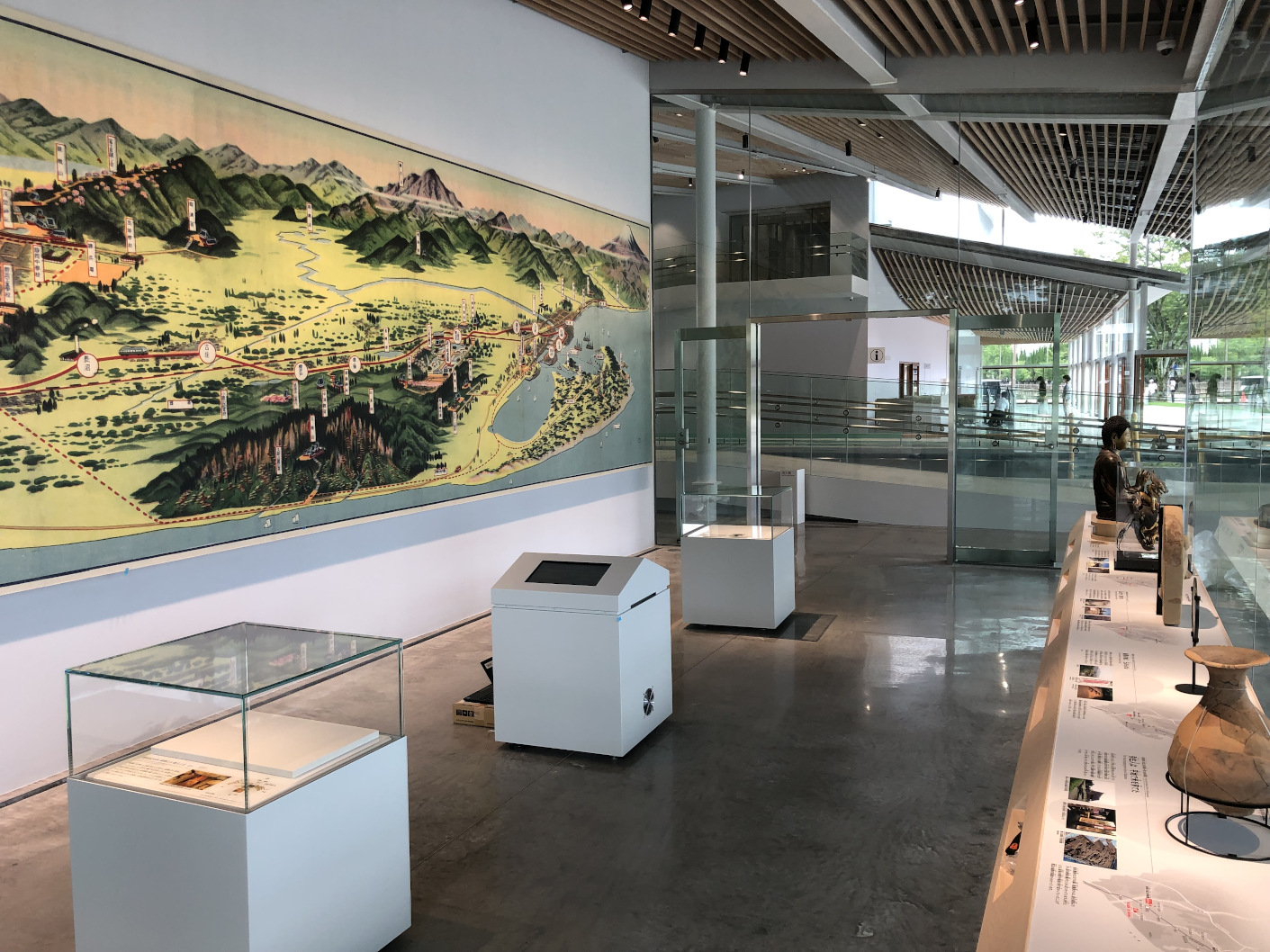 プレオープン間近の1Fのギャラリー展示
プレオープン間近の1Fのギャラリー展示
廣田
プレオープン時には、まだ展示室は一部しか開いていないので、しっかり歴史を学ぶというよりも、とにかく歴史に触れてもらいたい。歴史って面白い、博物館って楽しいと思ってもらいたい。例えば歴史のトークだとか、ちょっとしたモノづくりみたいなことを企画しているので、歴史は難しいとか興味がないと思っている人にも楽しんでもらえるように。最初はハードルを低くして、来年1月のグランドオープンにつなげていきたいと思います。
森
グランドオープン時の企画展などは決まっているのですか?
廣田
大体決まっています。2023年度中の企画展示は大小合わせて年間4回開催することを計画しています。家康が主人公の大河ドラマも始まるため、それを見て家康に関心を持つ人もいるでしょうし、開館当初はそれ目当てで来る人もいるでしょうから、家康とつながりがあるような企画展を打っていこうと思っています。
静岡市歴史博物館誕生の背景、プロジェクトメンバーが語る重要性
「歴史好きはもちろん、歴史に興味がない人でも楽しめる施設に」
森
それでは最後の質問になりますが、今後、静岡市、また市民にとってどんな施設になってほしいか、お一人ずつお考えを聞かせてください。
森参事
以前務めていた「歴史館いずみさの」での一番の反省点は、歴史好きな人を主な対象にしてしまったかなということです。静岡では、歴史に興味がない人でも利用できるような施設になってほしいと思っています。
廣田
実際運営が始まると、入場者数をはじめいろんなミッションをクリアしていくことが必要になります。できるだけ敷居を低くして、先ほども話したように歴史に興味がない人でも面白い施設だなと思ってもらいたいです。
鈴木
私はこの歴史博物館を、調査研究の拠点にしたいと考えています。ここ20年ほど地元の研究会に出ていて感じるのは、静岡の歴史を研究する人が本当に少なくなったことです。以前は学校の先生などに郷土史をやっている人がいたのですが、近年どんどん減っています。これは私の理想ですが、博物館の家康公研究室から静岡の歴史を研究する人が出てきてほしい。博物館をそういう拠点にしてほしい。展示やイベントがそのきっかけになればいいと思います。
宮崎
一般的な博物館のイメージとしては、展示だったり、歴史だったり、ステレオタイプの施設のイメージがあると思うのですが、この博物館はいろんな使い方をしてもらいたいなあと思います。例えば、1階のギャラリーでくつろぐだけでもいい、遺構とギャラリーだけ見て帰ってもいい、子どもたちが宿題をやりに来てもいい、もちろん専門家が研究室で資料を確認してもいい、カフェでお茶をするだけでもいい。老若男女、ターゲットを絞らず、とにかくいろんな方に、いろんな使い方をして欲しい。いろんな角度で、静岡に触れ、楽しめる施設に育てていきたいですね。
森
皆さんのお話を伺って、博物館は展示するだけの場所ではないのだなと改めて感じました。いろんな方々が、いろんな使い方、楽しみ方をする。そんな施設としてこの博物館が認知され、利用されていけばいいなと思いました。次回第3弾は、展示室内の様子もお伝えできればと考えていますので、引き続きよろしくお願いいたします。本日はどうもありがとうございました。
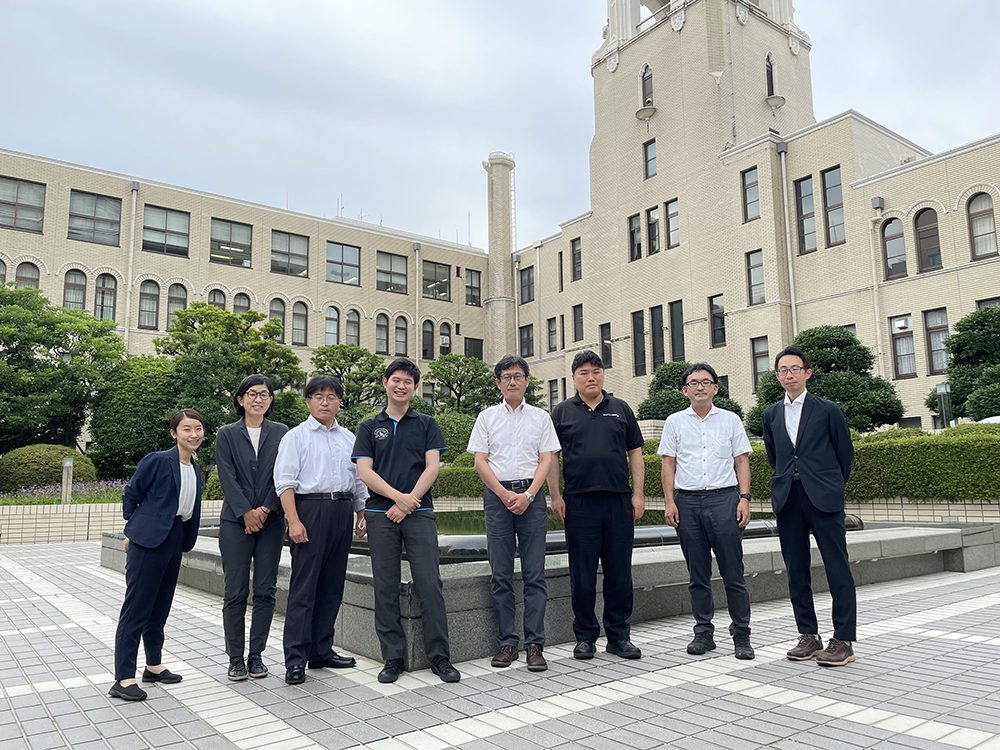
塔頂ドームが印象的な静岡市役所本館前で記念撮影。宮崎主任主事、森参事、廣田課長、鈴木主任と乃村工藝社のプロジェクトメンバー。
(文責/井戸幸一・森誠一朗)
この記事は気に入りましたか?
